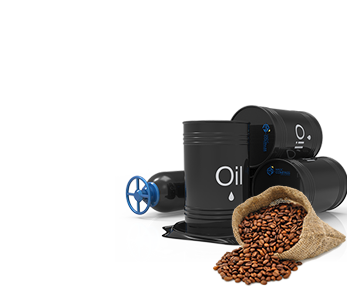Trading is the act of buying and selling financial instruments (stocks, currencies, commodities, etc.) with the intention of making a profit. Traders take advantage of short- or long-term price movements in the market.
Key Concepts:
🔹 Example:
A trader buys 100 shares of Apple at $150 and sells them at $160.
Profit = (160 – 150) x 100 = $1,000
Understanding where you can trade is essential. There are different types of financial markets, each with its own characteristics.
Stock Market




🔹 Example:
Trading EUR/USD during a U.S. interest rate announcement can cause rapid price movement. Traders profit from these short bursts.
These are the products or assets that traders buy and sell:
Different styles suit different personalities and schedules.
Day Traders
Charts are essential for tracking price movement over time.
📊 Common Chart Types:
🔍 Key Indicators:
🔹 Example:
If the RSI is over 70, the asset might be overbought—this can be a potential signal to sell.
Breakout Strategy
Trend Following
Reversal Strategy
🔹 Example:
If a stock consistently bounces between $95 and $105, buying at $95 and selling near $105 could be a simple, profitable strategy.
Managing risk is more important than chasing big wins.
Essentials:
🔹 Example:
With $1,000 in your account, risking 2% means a $20 risk per trade. If you aim for a $40 profit, that’s a 2:1 reward-to-risk ratio.
Here’s a step-by-step for getting started:
Choose a Broker: Find a reputable trading platform with good tools and support.
Open and Fund Your Account: Start small if you’re new.
Use a Demo Account: Practice trading with virtual funds.
Analyze the Market: Use charts and news to form a bias.
Place Your Trade: Choose your instrument, decide position size, and set stop-loss and take-profit levels.
🔹 Example:
You’re trading EUR/USD. After seeing bullish momentum and a breakout on the chart, you buy at 1.1000, set a stop-loss at 1.0950, and take-profit at 1.1100.
You’ve just taken a big step toward becoming a trader. You now understand:
Trading is a skill that takes time to master. Be patient, keep learning, and never stop refining your approach.
Disclaimer: The information and tools provided by Sky Links Capital are strictly for educational and informational purposes only. They do not constitute financial advice, investment recommendations, or an offer to buy or sell any financial instruments. Users should make independent decisions based on their own research and, where appropriate, seek professional advice.
Risk Warning: Trading in any Financial Instrument is complex and carries a high risk of losing money rapidly due to leverage. It may not be suitable for all investors. Before engaging in any trading activities, you should carefully assess your investment objectives, risk tolerance, and financial situation. If necessary, seek independent financial advice before proceeding with trading.
Sky Links Holding Ltd is a prescribed holding company incorporated in the Dubai International Financial Centre (DIFC), established solely to hold equity interests in financial services subsidiaries. It does not engage in regulated activities or operational control; subsidiaries operate independently under their own regulatory frameworks. The holding company supports capital stability, strategic alignment, and shareholder value across the group.
Sky Links Capital L.L.C. has its registered office located at Offices 208, BB03, Bay Square, Business Bay, Dubai, United Arab Emirates, and is registered with the Dubai Economic Department under License Number 1385407.
Sky Links Capital L.L.C. is a company licensed and regulated by the Securities and Commodities Authority under Category 5, with license number 20200000235. The SCA regulated company, acting as an Introductory firm, in partnership with Sky Links Capital Limited and other renowned regulated entities, is authorized to facilitate services for UAE residents and nationals. Sky Links Capital L.L.C. operates strictly as an Introductory entity and is not authorized to provide investment advice, manage, or hold clients’ assets or money. All services rendered by Sky Links Capital L.L.C. are provided solely on an Introductory basis.
Sky Links Capital Limited is a Limited Company with Investment Dealer (Full Service Dealer excluding Underwriting) under License No. GB24202837 and is authorized and regulated by the Financial Services Commission (FSC) in Mauritius.
Sky Links Capital L.L.C. is a Limited Liability Corporation registered in St Vincent & The Grenadines with registration no. 3698LLC2024.
Sky Links Capital Limited may publish general market commentary from time to time. Sky Links Capital Limited and Sky Links Capital L.L.C. accept no responsibility for any use of the content presented and any consequences of that use. No representation or warranty is given as to the completeness of this information. Anyone acting on the information provided does so at their own risk. The information contained herein is not intended for distribution to residents in any country where such distribution or use would contravene any local law or regulatory requirement. Our products and services are not available to embargoed or sanctioned countries. The information is not intended for distribution to, or use by, any person in any country or jurisdiction where such distribution or use would be contrary to local law or regulation.
Office#208, BB03, Bay Square, Business Bay, Dubai, UAE
+97144957000
Premier Business Center, 10th Floor, Sterling Tower, 14 Poudrière St, Port Louis, Mauritius
+230 5 8282426
Suite 430, Beachmont Business Center, Kingstown, Saint Vincent and the Grenadines.
+784 5324533
2025 Copyright © Sky Links Capital Limited.